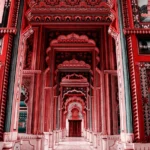Discover the best monsoon destinations near Pune with Savali Holidays, where the rain transforms the Western Ghats into a lush, green haven.
From breathtaking waterfalls to misty hill stations, historic forts, and scenic trekking trails—these handpicked getaways come alive during the monsoon. With Savali Holidays’ reliable car rental services in Pune, your journey to these magical spots is smooth, comfortable, and hassle-free.
1. Mulshi Why Go: Mulshi is a tranquil haven renowned for its waterfalls, the Mulshi Dam, and beautiful scenery. The region is a favorite among nature enthusiasts because it is encircled by undulating hills and deep forests.
Leading Attractions:
Mulshi Lake: A peaceful location for photography and picnics.
The Tamhini Ghat is well-known for its hazy slopes and tumbling waterfalls.
The Andharban Trek is a trek through a deep forest that provides stunning valley vistas.
Green Tips:
Carry reusable water bottles and refrain from polluting.
To preserve the plants and animals, stay on authorized trails.
2. Khandala and Lonavala
Why Go: Known for its many waterfalls and mist-covered slopes, these twin hill stations are a monsoon favorite.
Leading Attractions:
A well-liked location for taking in the rain is Bhushi Dam.
Tiger’s Leap: A vantage point with expansive valley views.
Ancient Buddhist rock-cut caves are Karla and Bhaja.
Locations for Trekking:
The moderate Rajmachi Fort Trek offers breathtaking vistas.
Beginners will love the beautiful flora and historical significance of the Lohagad Fort Trek.
3. Sinhagad Fort: A historical location that combines adventure and history, Sinhagad Fort is only 30 kilometers from Pune.
Highlights:
During the monsoon, streams and waterfalls encircle the fort.
Savor regional cuisine at the fort’s restaurants, such as pithla-bhakri.
Advice for Trekking:
Because the terrain can become slick, wear shoes that are durable.
Avoid the afternoon crush by starting early.
4. Reasons to Visit Tikona Fort: This triangular fort provides sweeping views of the nearby lakes and valleys.
Details of the Trek:
The hike is appropriate for novices and is quite easy.
At the top of the fort are water tanks and a tiny temple.
Environmentally Friendly Methods:
Steer clear of plastic and bring your trash back with you.
Do not deface the walls out of respect for the historical site.
5. Rajgad Fort Reasons to Visit: Historically significant, Rajgad Fort was the capital of the Maratha Empire and is a must-see for hikers and history buffs.
Highlights of the Trek:
With breathtaking views of the Sahyadri range, the trek is demanding but worthwhile.
The Padmavati Temple and Balekilla are two of the fort’s many attractions.
Safety Advice:
Bring adequate food and water for the hike.
Steer clear of trekking when it’s raining a lot.
6. Tamhini Ghat: Why Go? Tamhini Ghat is a picturesque mountain pass that transforms into a verdant haven during the monsoon season.
Points of interest:
Many streams and waterfalls.
Misty hills and dense trees.
Activities:
Photography and nature walks.
birdwatching since there is a lot of avifauna in the vicinity.
7. Andharban trip Reasons to Go: Andharban, which translates to “Dark Forest,” is a distinctive trip that offers breathtaking vistas of the Kundalika Valley while passing through dense woodlands.
Details of the Trek:
Since the majority of the trail is downhill, most hikers can complete it.
The hike goes past streams and waterfalls, which enhances the allure of the monsoon season.
Green Tips:
Don’t bother the wildlife.
To reduce your impact on the environment, choose biodegradable toiletries.
8. Lohagad Fort Reasons to Visit: Located close to Pune, Lohagad Fort is a well-liked trekking destination and a UNESCO World Heritage Site.
Highlights of the Trek:
The hike is suited for families and is easy.
The fort provides sweeping views of the surrounding hills and Pawna Lake.
Charm of the Monsoon:
When it rains, the fort is encircled by lush flora and waterfalls.
9. Purandar Fort: Purandar Fort is a historical monument that combines history and trekking.
Highlights:
The fort is perfect for a quiet retreat because it is less busy.
The moderate hike provides breathtaking views of the valleys around it.
Safety Advice:
Don’t go hiking by yourself, and bring a first aid kit.
Before beginning the hike, check the weather.
10. Korigad Fort: Korigad Fort provides breathtaking views of the Aamby Valley and is a rather simple walk.
Details of the Trek:
It is a short hike that is appropriate for novices.
At the top of the fort are water tanks and a temple.
11. Visapur Fort: A monsoon gem, Visapur Fort is close to Lohagad Fort, is less crowded, and has similarly breathtaking vistas.
Highlights of the Trek:
There are a variety of rocky routes and waterfalls during the intermediate trip.
Large stone archways and water cisterns are two of the fort’s most notable features.
Charm of the Monsoon:
Take in the tumbling waterfalls while trekking.
Safety Advice:
To prevent slippage, put on trekking shoes that are waterproof.
To prevent rain in the late evening, begin your hike early.
12. Kalsubai Peak: Often referred to as the “Everest of Maharashtra,” Kalsubai Peak is the state’s highest peak and a strenuous but worthwhile hike.
Details of the Trek:
The journey passes over mountainous terrain, steep slopes, and verdant pastures.
The Sahyadri range can be seen in all directions from the summit.
Green Tips:
To avoid harming the native plants, stay on the trail.
To stay hydrated, keep reusable water bottles with you.
13. Pawna Lake Reasons to Visit: During the monsoon season, Pawna Lake, which is encircled by forts such as Tung, Tikona, and Lohagad, is a tranquil place to camp.
Activities:
Stargazing and bonfires while camping by the lake.
Boating and taking pictures in the verdant surroundings.
Charm of the Monsoon:
A cool atmosphere is created by the lake’s overflowing water.
Environmentally Friendly Methods:
When camping, stay away from single-use plastics.
Leave no trace behind to show respect for the environment.
14. Devkund Waterfall Why Go: During the rainy season, the captivating Devkund Waterfall, a hidden gem close to Bhira village, is a sight to behold.
Details of the Trek:
a reasonably easy hike through streams and thick forests.
A breathtaking waterfall that plunges into a natural pool awaits you at the endpoint.
Safety Advice:
When it’s raining a lot, stay away from swimming close to the waterfall.
If you’re not familiar with the area, hire a local guide to help you navigate.
15. Harishchandragad Fort Reasons to Visit: History, adventure, and stunning monsoon views can all be found at this trekker’s paradise.
Highlights of the Trek:
A breathtaking vantage point, the Konkan Kada (Konkan Cliff) is renowned for its dramatic drop and cloud play.
Exploring historic temples and caverns at the fort is another aspect of the journey.
Charm of the Monsoon:
Mist and lush greenery envelop the fort and its environs.
Green Tips:
For all trash, use biodegradable waste bags.
Steer clear of loud music to preserve the calm ambiance.
16. Why Go to Torna Fort: Also called “Prachandgad,” Torna Fort is the tallest fort in the Pune district and is significant historically because it was the first fort that Chhatrapati Shivaji Maharaj took control of.
Details of the Trek:
The hike has steep ascents and is moderate to difficult.
Views of the surrounding valleys are captivating from the fort.
Safety Advice:
Carry rain gear as the area receives significant rainfall.
Ensure you have a guide if you’re trekking for the first time.
17. Bhimashankar Why Visit: Home to one of the 12 Jyotirlingas, Bhimashankar is a spiritual and ecological retreat.
Leading Attractions:
Bhimashankar Temple: A sacred pilgrimage place.
Bhimashankar animal Sanctuary: A refuge for environment lovers and animal aficionados.
Highlights of the Trek:
The Shidi Ghat and Ganesh Ghat paths are renowned trekking trails.
Environmentally Friendly Methods:
Avoid disturbing the wildlife in the sanctuary.
Use eco-friendly goods during your trek.
18. Madhe Ghat Why Visit: Madhe Ghat is a lesser-known monsoon getaway with magnificent waterfalls and breathtaking views.
Points of interest:
The major feature is a large waterfall surrounded by lush flora.
The location is perfect for those seeking quiet because it is not very crowded.
Charm of the Monsoon:
The waterfall’s beauty is enhanced by the intense rains, which also create a mystical atmosphere.
19. Wai Why Go: Wai is a charming village close to Panchgani, known for its old temples and gorgeous ghats.
Leading Attractions:
On the banks of the Krishna River sits the Dholya Ganpati Temple.
Kamalgad Fort: A remote fort with expansive vistas.
Green Tips:
Do not vandalize the buildings to show respect for the heritage sites.
To reduce trash, bring reusable bottles and cloth bags.
20. Why Visit Ajinkyatara Fort: This medieval fort in Satara provides sweeping views of the city and the mountains around it.
Details of the Trek:
The hike is suited for families and is easy.
Ancient water tanks are one among the fort’s many interesting features.
Charm of the Monsoon:
The fort’s appeal is increased by the surrounding foliage and mist.
Remarkable Remarks
Here are some additional locations that are worth seeing:
Panchgani: Known for its tranquil hills, Mapro Garden, and Table Land.
A traditional hill station featuring strawberry plantations and waterfalls is Mahabaleshwar.
The Raireshwar Plateau is well-known for its expansive meadows and biodiversity.
The Kundalika River is a great place to go river rafting in the middle of the monsoon season.
Checklist for Monsoon Travel Clothes:
Bring sturdy shoes and lightweight, waterproof clothing.
Essentials:
Keep an emergency kit, a torch, and a waterproof bag with you.
Eco-Friendly Equipment:
Make use of reusable products such as cloth bags, utensils, and bottles.
Safety During the Monsoon:
To avoid mishaps, avoid trekking during storms or periods of intense precipitation.
Environmentally Friendly Methods:
Carry reusable water bottles and refrain from polluting.
Do not deface the walls out of respect for the historical site.
General Advice for Essentials of Monsoon Travel Packing:
Bring a raincoat and a waterproof backpack.
When trekking, put on solid, non-slip shoes.
Safety Measures:
Steer clear of trekking when it’s raining a lot.
Tell someone you’ll be traveling.
Environmentally Friendly Methods:
To reduce trash, bring reusable goods with you.
Encourage local companies and communities.






